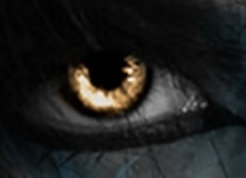The Secrets Behind The Great Serpent Mounds Of Ohio
By James Donahue
Adams
County, Ohio, offers the site of the Great Serpent Mount, considered by archaeologists and historians to be the most dynamic
and mysterious effigy mount in the United States.
Measuring almost a quarter mile in length, the twisting, winding mound built in the form of a massive snake swallowing
an egg, is believed to be among the largest serpentine earthworks in the world.
It is a surviving earthwork, but it may not have been the only serpentine mound of its kind that once existed
in Ohio. Another similar to it once was said to have existed in Warren County, located in Southwest Ohio between Dayton and
Cincinnati. George Frederick Wright, in an article published in 1908, described the mound as 1,300 feet in length, three feet
high and from 10 to 15 feet in width. Even when he saw it, Wright said erosion from a nearby stream had destroyed the head.
Since his article appeared, the remains of the mound have been destroyed by human encroachment.
Also in Warren County, John R. White, professor of Anthropology
at Youngstown State University, wrote that in the 1980s he examined two large stone effigies of rattlesnakes along the Little
Miami River. He said they were made of flat shaped limestone slaps piled about two feet high and two meters wide. One was
86 feet long and the other measured 152 feet.
It
was White’s theory that the snake effigies were made by the Fort Ancient prehistoric Indian culture that lived in the
region around A.D. 1200. Also, because of the remains of a post hole in front of the heads of the snakes, White believed that
posts were used like a sun dial, with a shadow moving down the backs of the snakes, to mark the summer and winter solstice.
While unique to Ohio, within most of the United States, serpent
mounds have been found elsewhere in the world, including Britain and Mexico. Also the dragon, snake or reptile image has played
an important role in ancient cultural artworks throughout the world.
So why was the serpent images considered so important to the ancient people that they would build massive earthworks
like the ones found in the rural areas of the Midwestern United States?
Like images found in England, South America and in other parts of the world, the serpent mounds can only be seen
and appreciated for their artwork from the air. The people of that prehistoric era did not have the capability of flight.
But Aliens would have.
Lucifer was described in the Book of Genesis as a serpent when he tempted Eve in the Garden of Eden. Was it because
he was serpentine in physical appearance?
Consider
that the ancient humans may have had both the memory and myth of alien contact. If alien DNA was added to that of a humanoid
primate on Earth to give us the level of human intelligence we now possess. If this story is correct, alien intervention turned
us from mere animals to creatures with a shared soul.
If the ancients built monuments in the shape of giant serpents, does this not suggest that the alien visitors
looked like serpents? Thus the tribes that built these mounds and carved these images did not fear the serpent god. They worshipped
it.

